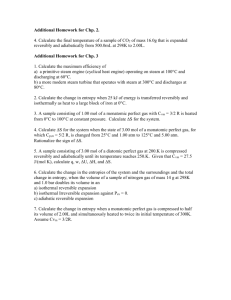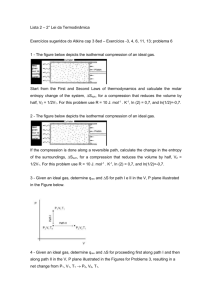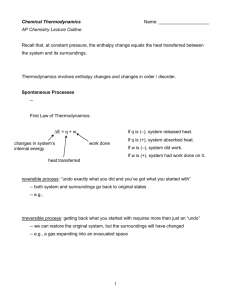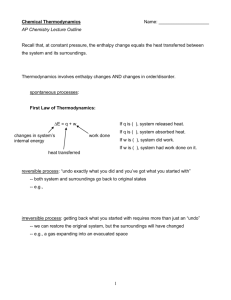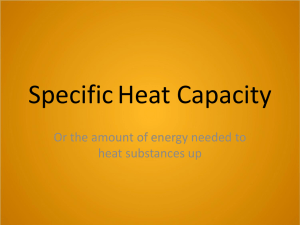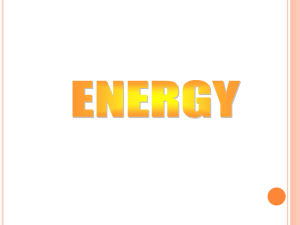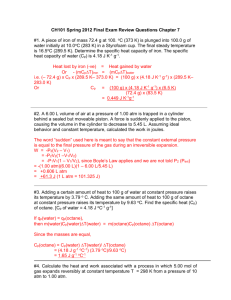Thermodynamics Problem Set: Second & Third Laws
advertisement
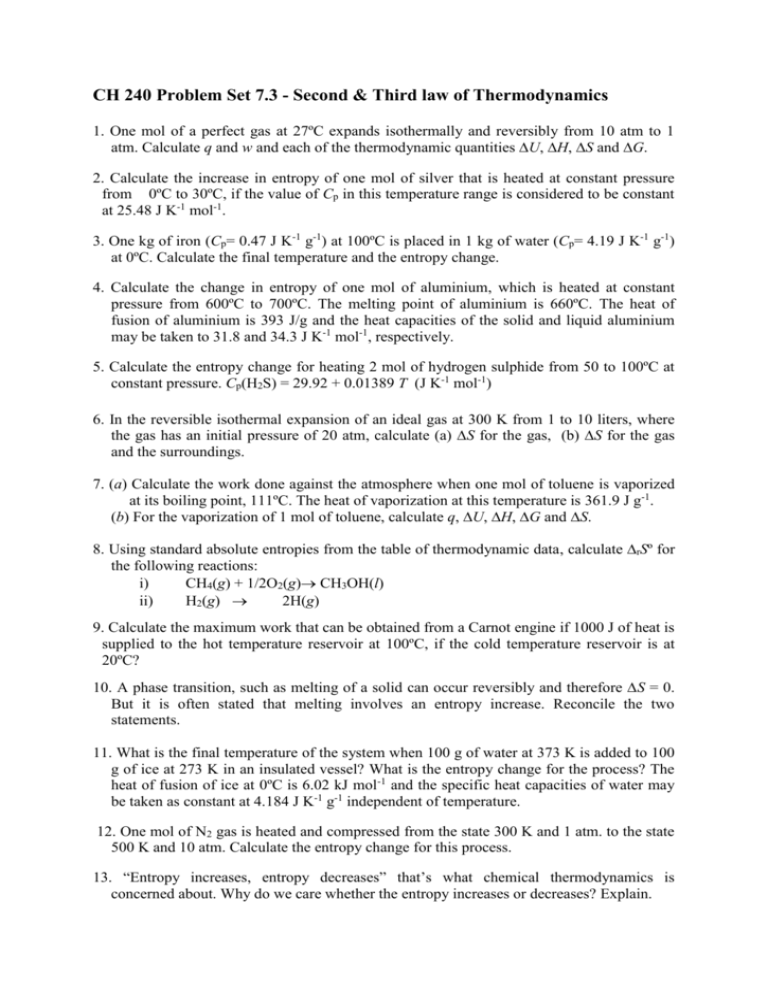
CH 240 Problem Set 7.3 - Second & Third law of Thermodynamics 1. One mol of a perfect gas at 27ºC expands isothermally and reversibly from 10 atm to 1 atm. Calculate q and w and each of the thermodynamic quantities ∆U, ∆H, ∆S and ∆G. 2. Calculate the increase in entropy of one mol of silver that is heated at constant pressure from 0ºC to 30ºC, if the value of Cp in this temperature range is considered to be constant at 25.48 J K-1 mol-1. 3. One kg of iron (Cp= 0.47 J K-1 g-1) at 100ºC is placed in 1 kg of water (Cp= 4.19 J K-1 g-1) at 0ºC. Calculate the final temperature and the entropy change. 4. Calculate the change in entropy of one mol of aluminium, which is heated at constant pressure from 600ºC to 700ºC. The melting point of aluminium is 660ºC. The heat of fusion of aluminium is 393 J/g and the heat capacities of the solid and liquid aluminium may be taken to 31.8 and 34.3 J K-1 mol-1, respectively. 5. Calculate the entropy change for heating 2 mol of hydrogen sulphide from 50 to 100ºC at constant pressure. Cp(H2S) = 29.92 + 0.01389 T (J K-1 mol-1) 6. In the reversible isothermal expansion of an ideal gas at 300 K from 1 to 10 liters, where the gas has an initial pressure of 20 atm, calculate (a) ∆S for the gas, (b) ∆S for the gas and the surroundings. 7. (a) Calculate the work done against the atmosphere when one mol of toluene is vaporized at its boiling point, 111ºC. The heat of vaporization at this temperature is 361.9 J g-1. (b) For the vaporization of 1 mol of toluene, calculate q, ∆U, ∆H, ∆G and ∆S. 8. Using standard absolute entropies from the table of thermodynamic data, calculate ∆rSº for the following reactions: i) CH4(g) + 1/2O2(g) CH3OH(l) ii) H2(g) 2H(g) 9. Calculate the maximum work that can be obtained from a Carnot engine if 1000 J of heat is supplied to the hot temperature reservoir at 100ºC, if the cold temperature reservoir is at 20ºC? 10. A phase transition, such as melting of a solid can occur reversibly and therefore ∆S = 0. But it is often stated that melting involves an entropy increase. Reconcile the two statements. 11. What is the final temperature of the system when 100 g of water at 373 K is added to 100 g of ice at 273 K in an insulated vessel? What is the entropy change for the process? The heat of fusion of ice at 0ºC is 6.02 kJ mol-1 and the specific heat capacities of water may be taken as constant at 4.184 J K-1 g-1 independent of temperature. 12. One mol of N2 gas is heated and compressed from the state 300 K and 1 atm. to the state 500 K and 10 atm. Calculate the entropy change for this process. 13. “Entropy increases, entropy decreases” that’s what chemical thermodynamics is concerned about. Why do we care whether the entropy increases or decreases? Explain.


